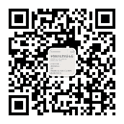| 基金项目:重庆市教育科学规划课题(2019-GX-371);重庆市高等教育教学改革研究项目(193072);重庆医科大学校级教育教学研究项目(JY180303) |
|
| 摘要点击次数: 1468 |
| 全文下载次数: 500 |
| 中文摘要: |
| 目的 探索基于虚拟仿真系统的新型评价体系在机能学实验教学评价中的应用效果。方法 收集2019至2020学年学生学习数据,对比分析在新型教学评价标准下,使用虚拟仿真教学系统对教学目标达成的影响;问卷调查学生对虚拟仿真教学系统的评价。采用SPSS 22.0进行卡方检验。结果 使用新型评价标准的学生虚拟学习成绩优秀比率为75.49%(308/408),而未使用学生的成绩优秀率仅为32.22%(135/419),差异有统计学意义(P<0.01)。不同教学目标要求学习虚拟仿真项目数为4、11、14,对应的学生虚拟仿真系统成绩优秀率分别是99.19%(246/248)、93.14%(380/408)、84.72%(488/576),差异有统计学意义(P<0.01)。93.8%(348/371)的学生认为虚拟仿真系统的学习可帮助提高实验成功率,93.26%(346/371)的学生认为提高了实验课上分析和处理突发问题的能力。结论 基于虚拟仿真系统构建的新型评价体系可促进机能学实验教学质量的提高。 |
| 英文摘要: |
| Objective To explore the application effect of a new evaluation system based on virtual simulation system in the evaluation of functional science experiment teaching. Methods The data of students' learning in the 2019-2020 academic year were collected, and the impact of using virtual simulation teaching system on the achievement of teaching goals under the new teaching evaluation standard was comparatively analyzed. Questionnaire survey was conducted to study students' evaluation on the virtual simulation teaching system. SPSS 22.0 was used for chi-square test. Results The students who used the new formative evaluation standard had a virtual academic excellence rate of 75.49% (308/408), while the unused students had an excellence rate of only 32.22% (135/419), with significant differences (P<0.01). The number of virtual simulation items required for different teaching objectives were 4, 11 and 14, respectively, and the corresponding students' virtual simulation system outstanding rate was 99.19% (246/248), 93.14% (380/408), 84.72% (488/576), with significant differences (P<0.01). And 93.8% (348/371) students thought the learning of the virtual simulation system could help improve the success rate of the experiment, and 93.26% (346/371) of the students believed that it had improved the ability to analyze and deal with unexpected problems in the experimental class. Conclusion The new evaluation system based on the virtual simulation system can promote the improvement of the experimental teaching quality of functional science. |
|
查看全文 查看/发表评论 下载PDF阅读器 |
|
| 关闭 |
|
|
|
